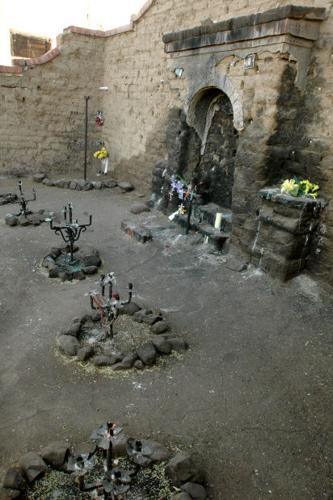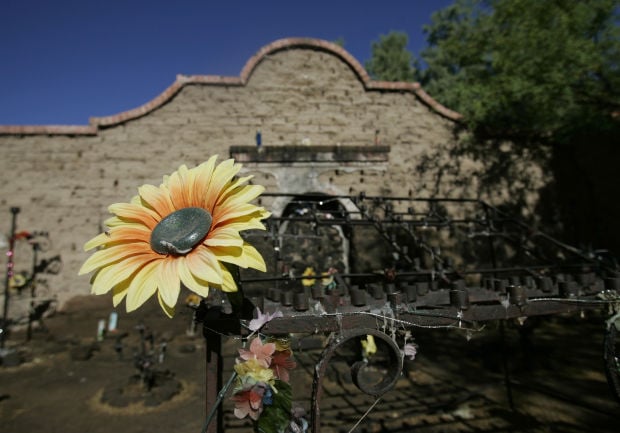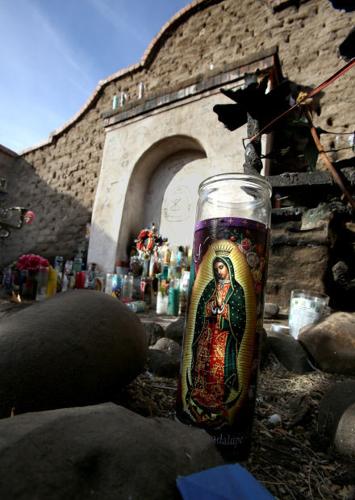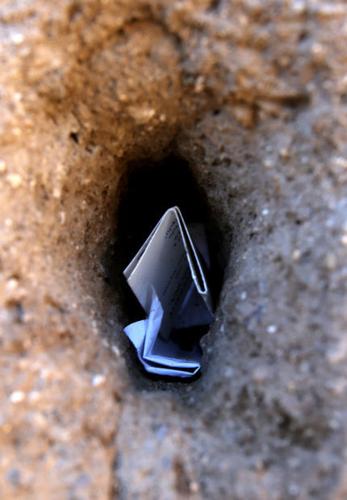In the 1920s, our shrine, El Tiradito, which had been downhill from its present location, was moved because of a street-widening project, and settled on land donated to the city of Tucson.
Exactly what was moved, a shrine, or a shrine and a burial? We don’t know. Personally, I feel there is a chance that nobody was ever buried at the site, but that Anglo-Americans, encountering a traditional Mexican cross at the site of the sudden death, mistook the death site for a burial. No way of knowing now.
It was at this time that the city adopted its “official legend and story,” and stories about the shrine started appearing in such magazines as Progressive Arizona.
Something must have been going on to prompt these changes. My take on it is that the “something” was statehood, which removed the pressure on the community to look “American,” combined with increased transcontinental rail travel. All of a sudden, the “foreign” flavor of the border states became less of an impediment to progress, and more of an attraction for curious visitors seeking the exotic.
And so El Tiradito entered a new, official phase of its existence. It became city property, and evolved into a place where one takes one’s out-of-town visitors who want to learn something about Tucson’s history and traditions.
In 1940, the present wall with its niche was built, funded under the auspices of the National Youth Federation.
Later on, the wrought iron candle rack and candlesticks were added by a grateful user of the site. Although the site was changing in many ways, becoming a destination for visitors and a part of Tucson’s local color, it remained a place where folks went in order to plug into some kind of power. This sometimes took place in surprising ways.
One man remembered that, when he was young and living near El Tiradito, his friends would hang out by the shrine, waiting for tourists. When visitors would arrive, the kids would pitch pennies at the wall. When asked the reason, they would say it was for “good luck.” Naturally the tourists would join in, sometimes pitching nickels and dimes as well as pennies. When the visitors left, the neighborhood kids would collect the money and buy snow cones.
Once again, the shrine was a source of power for the powerless!
Next: the Butterfield Parkway and more transformations.







